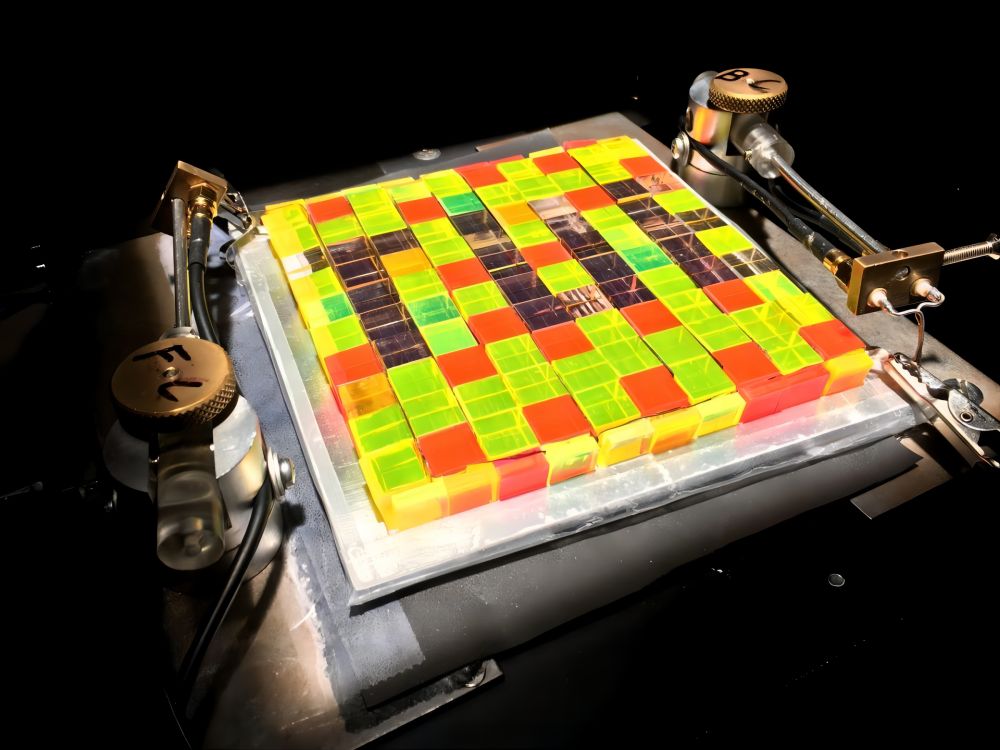
Cubic Luminous Solar Concentrators in Urban Environments

A Dutch-Australian research team has developed a 1 cm3 luminescent solar concentrator (LSC) device equipped with 20% efficient bifacial silicon photovoltaic cells that can be used and assembled into a variety of mosaic configurations.
These mosaic LSC photovoltaic devices can be used to make solar energy ubiquitous in urban environments, which requires the fabrication of visually appealing devices that can function under challenging lighting conditions in cities.
Therefore, by developing this colorful and visually appealing mosaic LSC photovoltaic device, one can accelerate the general acceptance of solar energy in the built environment even with inefficient devices. The proposed LSC photovoltaic device supports colored surfaces, transparency, and offers degrees of freedom, offering many design opportunities to enhance the overall functionality and experience of photovoltaics in consumer products, built environments, and transportation.
LSCs are commonly used as photonic devices for the production of fine chemicals in photomicroreactors, for controlling the entry of light into spaces in dynamic "smart" windows, and for distributing color-tuned light to promote plant growth in greenhouses. They can also be used to increase the efficiency of solar panels. LSCs are composed of luminescent materials, also known as luminophores, which are groups of molecules that emit light when illuminated.
These materials can be coated on the surface of a polymer or glass sheet or used as a dopant for a polymer or glass sheet, acting as a light guide that captures one wavelength of direct and indirect sunlight and re-emits it at a certain wavelength . longer wavelengths. If applied to photovoltaics, luminophores are able to capture high-energy photons that photovoltaic panels cannot absorb and re-emit them as photons.
The scientists inserted bifacial solar cells between individual LSC elements and created a pattern of cubic mosaic LSC elements. They say that this design increases the available top surface area of the solar cell per unit aperture area, and therefore can improve the power conversion efficiency of the entire LSC photovoltaic device.
For the LSC device, they used traditional materials such as polymethyl methacrylate (PMMA) doped with commercial organic dyes and coumarin (Cou) compounds. The researchers used an index-matched optical adhesive to attach the double-sided cells to the edge of the lightguide and single-sided c-Si PV cells to the backside of the lightguide cube. They use polyolefin (PO) material to encapsulate the battery.
Under standard lighting conditions, the team found that the luminophores were able to absorb nearly all high-energy photons and emit longer-wavelength photons that better matched the spectral response of silicon solar cells. They also tested several mini-mosaics to determine the performance of the LSC array.
The researchers say commercial production of the proposed device could begin after its efficiency is further improved.
Previous :
What is solar racking?Next :
Installation Manual for Solar FarmCategories
New Blog
© Copyright: 2025 Xiamen Wintop New Energy Tech Co., Ltd.. All Rights Reserved.

IPv6 network supported
Friendly Links:
Integrated Solar System